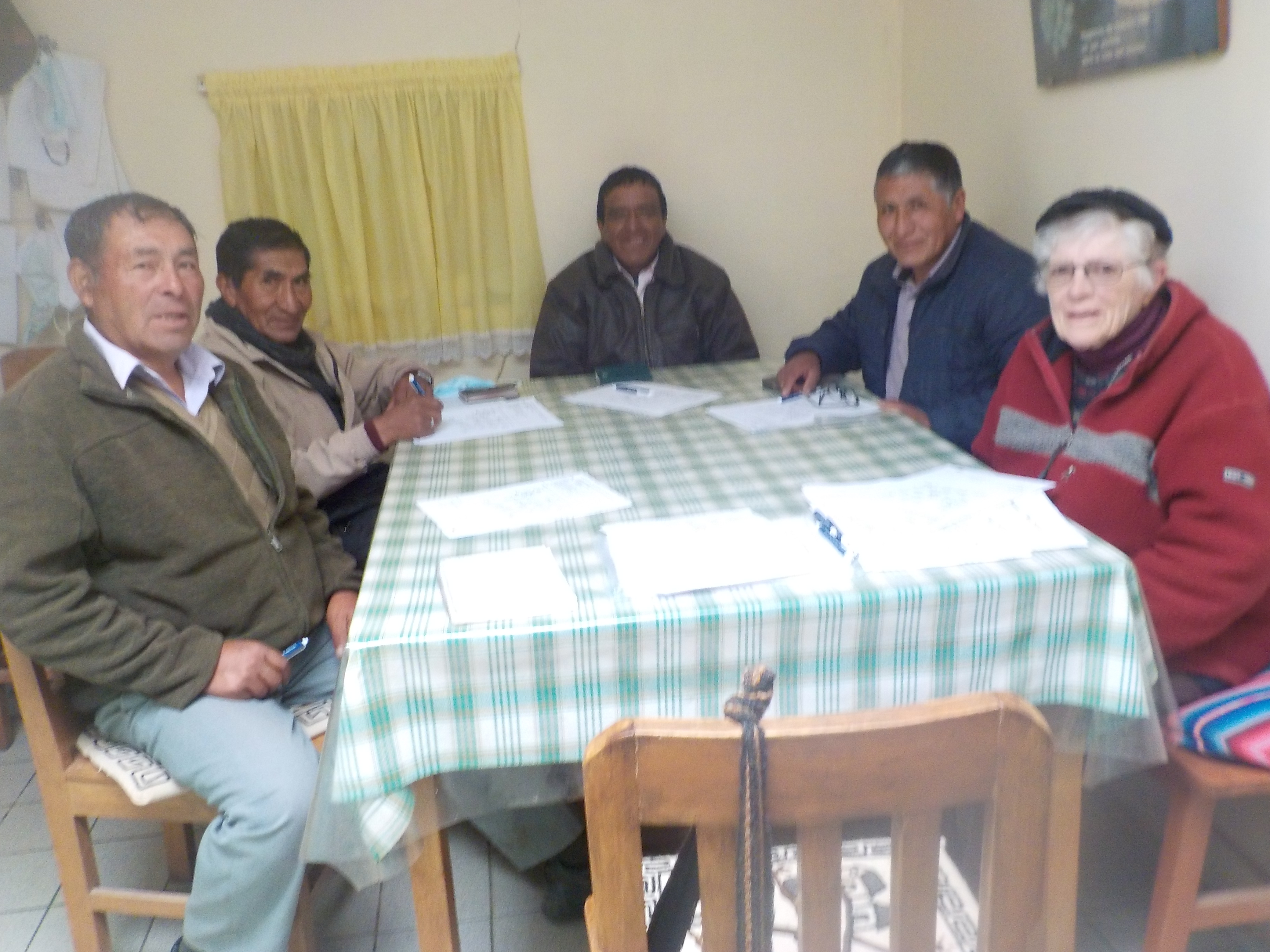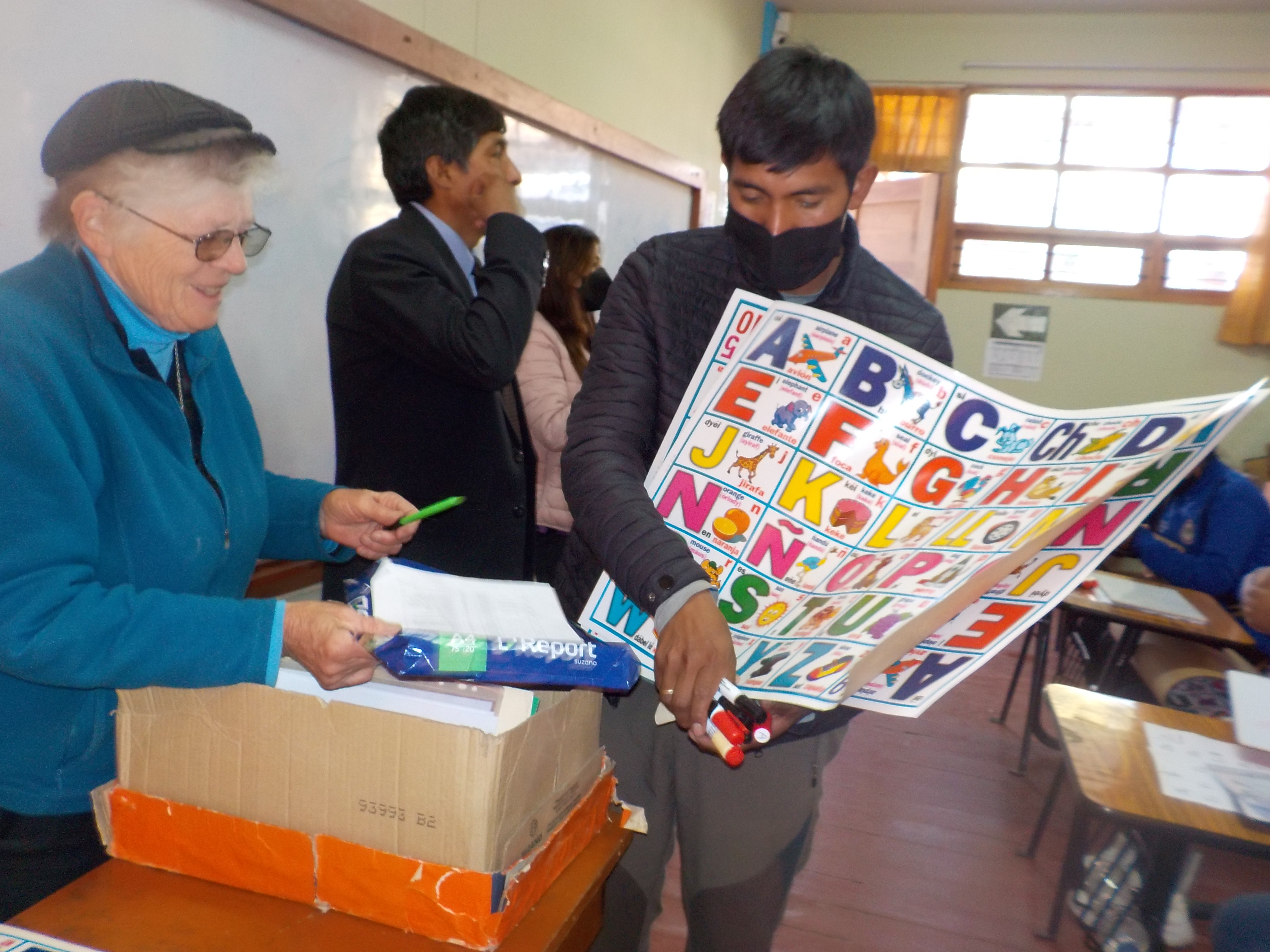
Signs of the Times in Sicuani
How does a child learn to read from classes dictated over a small cell phone in a remote Andean village in Perú? During the two years of virtual learning due to COVID, many children lost out. In the parish library in Sicuani where Sister Ancilla ministers, she discovered second and third graders who were illiterate, trying to do assignments according to their grade level. She shared this difficulty with Sisters Eileen and Norma one evening. Eileen went to the Regional Education office and asked what their plan was to meet the needs of so many children who missed out during the pandemic. They began to organize a plan contacting the local teachers college urging the students there who needed practice teaching to dedicate some afternoons each week
to tutor the illiterate children.
Eileen also made a plan. Having been instructed in primary methods one summer during the novitiate by Sister Marella, she began to gather materials for the students thanks to donations from many of her sister friends while she was in the US for the Chapter of Elections. A workshop was offered to the young practice teachers using alphabet charts, small white boards and markers along with duplicated papers of simple words beginning with all the consonants and vowels. Since the children are not taught to print in Perú, all the printed words on the alphabet chart needed to be re-written in cursive for the children to trace. Bit by bit, things clicked.
The education office contacted six rural schools near Sicuani since there were only 29 practice teachers available, believing that the city schools had a decided advantage with special tutors available.
One school near the sisters' home had 23 third graders who hadn't learned to read. Sister Norma urged some of the teenagers in her youth group to assist that class so the children would be all pointing to the correct letter or word as the practice teacher was writing on the board. Literacy became a community project thanks to the generosity of many of our sisters who helped us buy the materials.
Towards the end of May, Eileen also organized a group of Quechua speaking catechists who had worked with her many times in the past, to help instruct new catechists in basic teachings of the faith. In previous years she had huge picture charts made for instruction and Ancilla had written grants to the USCCB sub-committee of the church in Latin America for the money needed to sponsor the workshops.
Sister Eileen with a Peruvian man holding an alphabet chart
